Interior design for well-being
Healthy Slim through Interior Design
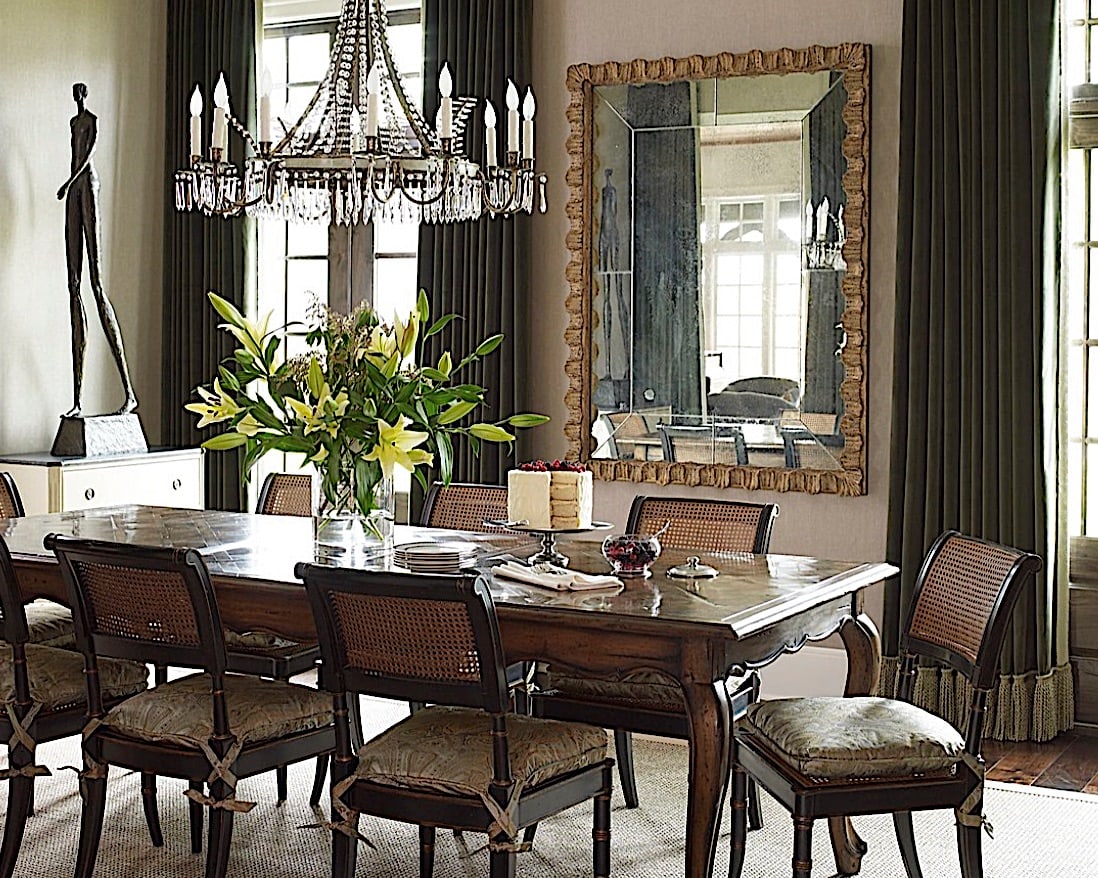
Putting aside the style, which is personal, the above pictured setting could be a model dining room to support our journey towards achieving an ideal weight. If you wonder why, you will know the answer by the end of this essay. Interior design by Kevin Spearman Design. Photo credit: @kevinspearmandesign.
We all know that a healthy diet and regular fitness activities are a good way to keep our weight in form. But what about our interior surroundings? Do you know that some interior design and architectural elements can influence your eating habits meaning that a thoughtful interior design can support your goal to achieve your desired ideal weight?
Our appetite is affected by multi-sensory interactions in our brain. Flavour is just one of them in addition to what we see, smell, touch and hear. We receive appetite triggers, often arising simultaneously, not only from food products and dishes but also from our environment; for example, temperature and light are also factors that influence our food consumption.
It is well-known that we are more likely to change some disadvantageous habits not at the beginning of a new year but by changing our surroundings. There is an essential point in which I, as an interior designer, firmly believe:
To achieve what we want,
our interior surroundings should not only reflect our personality today,
but support our desired goals
to become the person we want to be.
This is possible through a sensitively personalised interior.
With this in mind, let’s reconsider our home interior starting with the main venue of action – the dining room.
Dining room
Designing our dining space and, if possible, the entire home according to our needs and goals can support our desire to achieve a healthy weight. Like any room, a well-designed dining room has to comprise the essential furnishings we need but nothing that is out of place and could disturb us. This should especially be considered if we struggle to keep our weight under control.
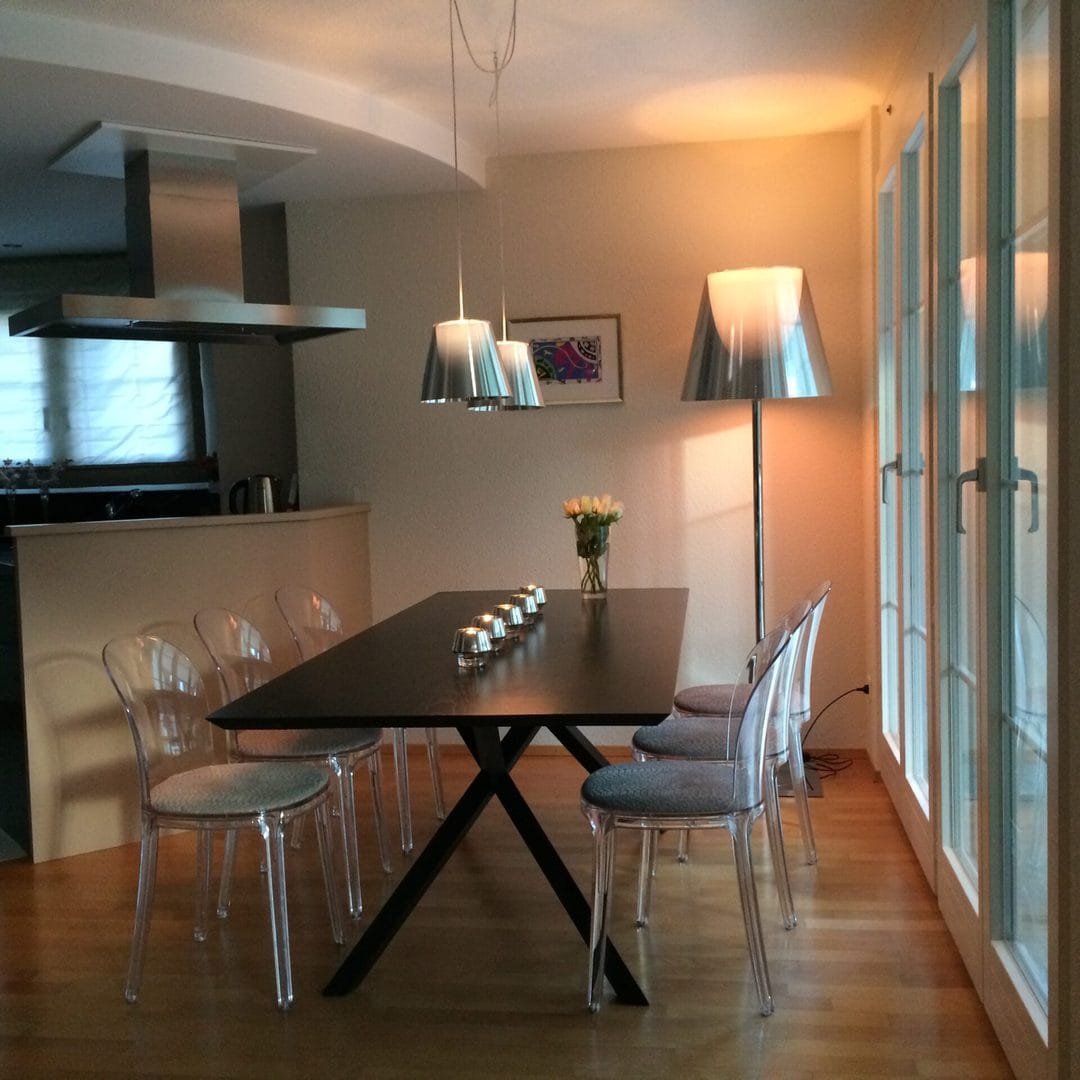
A sleek, almost spartan designed dining room is a good prerequisite for reducing consumption. Interior design by Nelly Zafirov Designs. Photo credit: www.nellyzafirovdesigns.com.
Layout
If possible, the dining area and the kitchen should be two separate rooms. An architecturally open kitchen-dining area, so fashionable lately, may significantly affect our eating behaviour, unfortunately not in a positive way: the unhindered visual access to the kitchen, not to mention the delicious aromas, encourages the consumption of food. To prevent any tempting thoughts and grazing around accessible treats, kitchens and pantries are better kept as separate rooms that can be closed and located away from traffic paths.
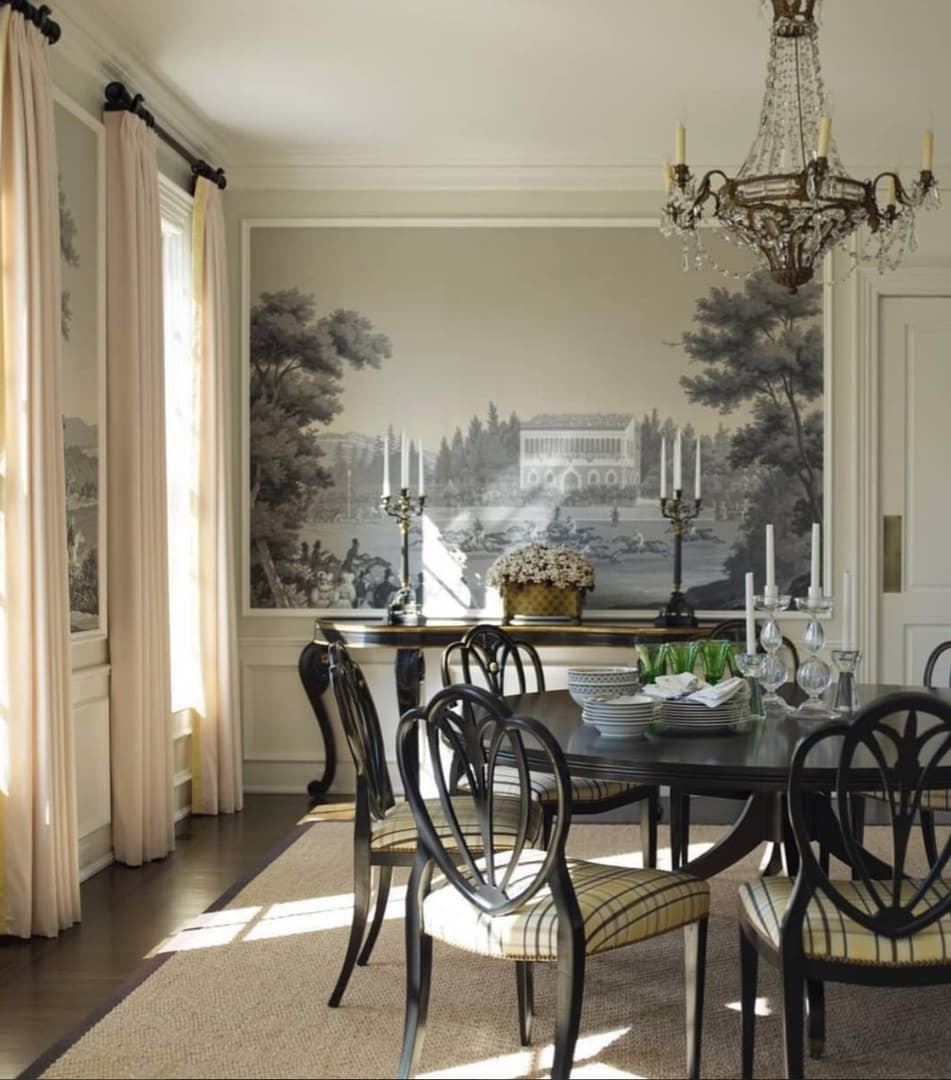
Separate from the rest of the house and with a tranquil atmosphere created by muted colours and gentle daylight, this elegant dining room provides an ambience for composed behaviour at the table. Interior design by Gideon Mendelson, @gideonmendelson. Photo credit: @zuberofficial.
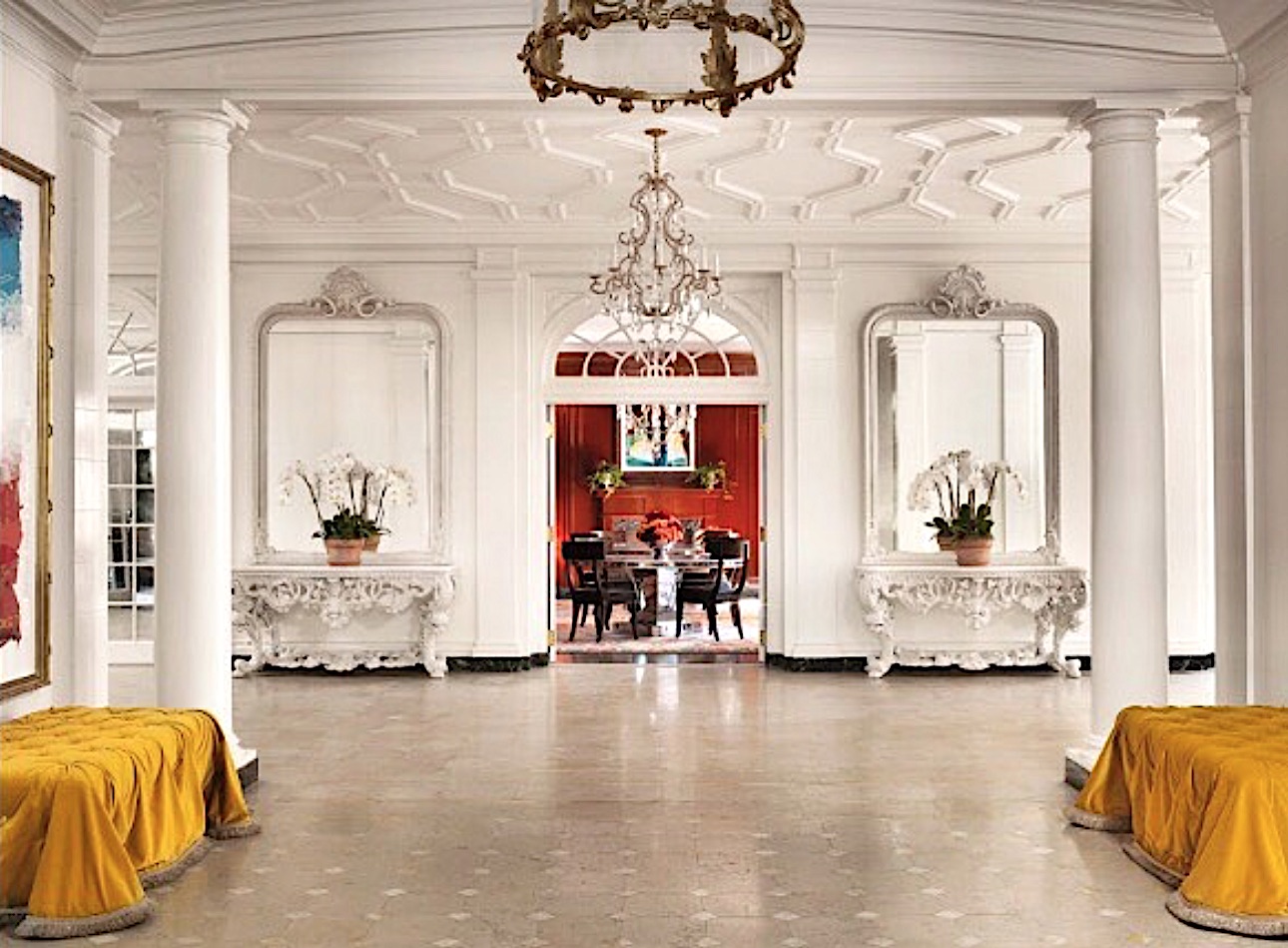
This image showing a gorgeous hall was named A view outside of the dining room by the creator of the space, the American interior and architectural designer, Jimmy Jamieson. We would add: A long way leads to the dining room. Photo credit: @jamieson_design.
Furnishing
The key furnishing features in our dining room are the dining table, dining chairs, lighting sources… and a mirror.
Dining table
It goes without saying that we choose a dining table that is ergonomically comfortable, serves the needs of our household and matches our preferred style. There is something curious relating to our theme about controlling weight. Evidence-based research has found that the size of our dining table influences how much we consume; namely, people seem to eat less when dining at a large table. The rule reads: Serve food in small portions on a large table.
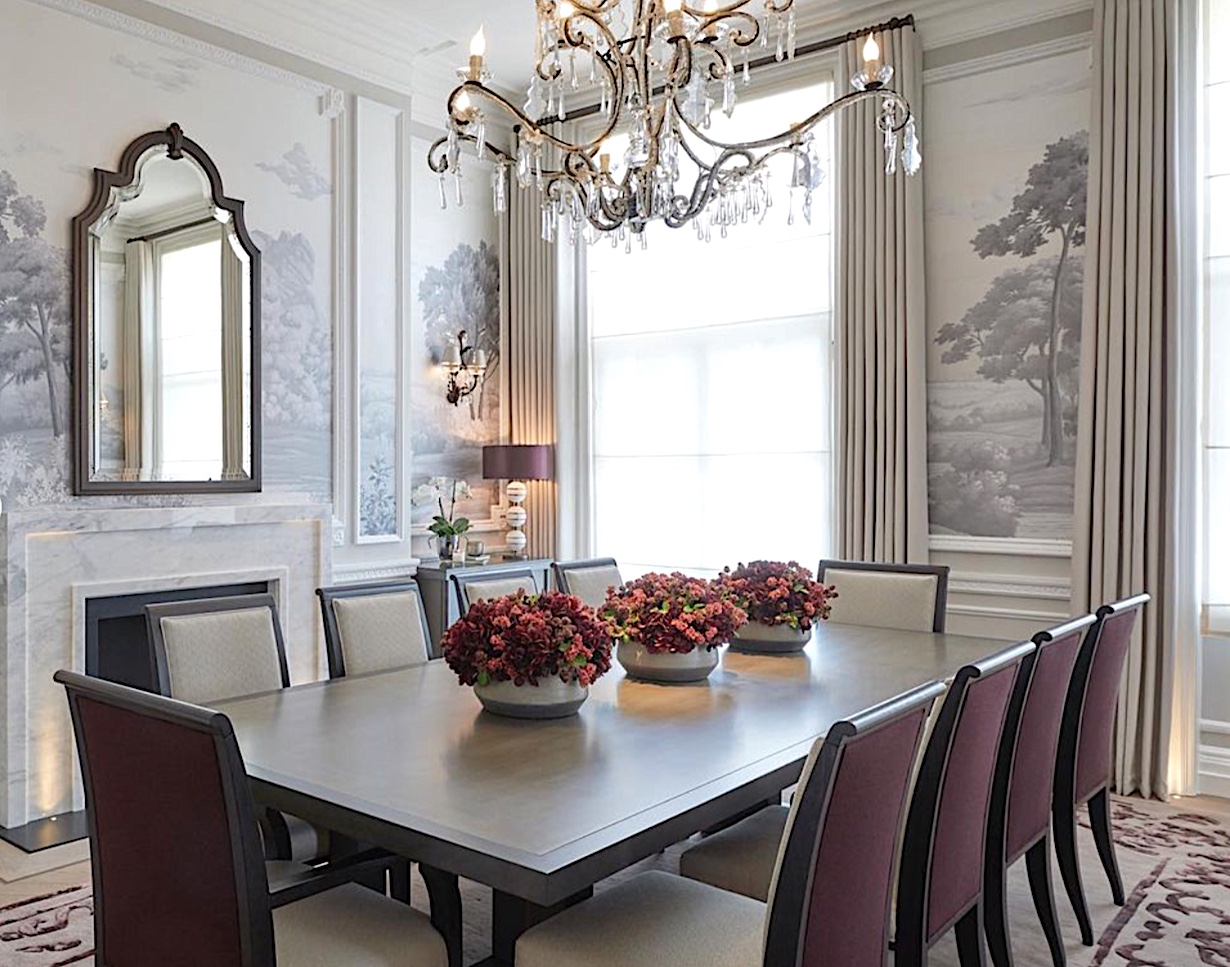
Stylish dining room in a mainly neutral colour palette. Let’s pay attention to the large table, the mirror, the subtle hues and the aubergine-purple colour accents because they are related to the topic of our essay. Interior design by Sophie Paterson Interiors. Photo credit: @sophiepatersoninteriors.
Dining chairs
Good dining chairs are certainly ergonomically comfortable. Comfortable, yes, but not in an overindulging manner, says the research, if we want to have our weight under control because when we feel pleasure, we tend to spend more time at the table and, after a while, we help ourselves to some unplanned servings.
One of the first classics of the 21st century: Luis Ghost Chair by Philippe Starck.
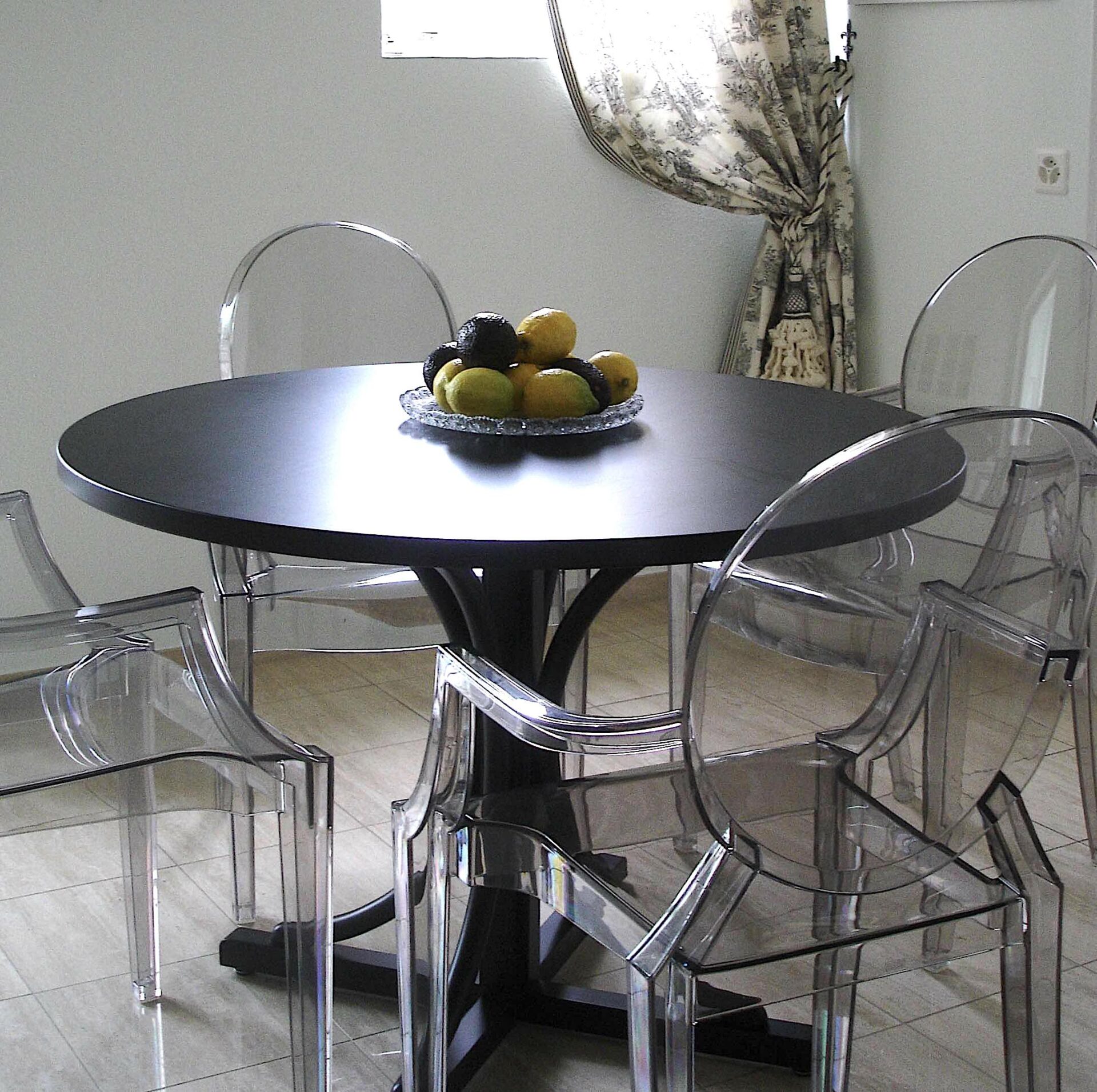
Being comfortable but not encouraging overindulgence are, for example, dining chairs without any upholstery or seat cushions. The images below show two rows of super comfortable chairs designed according to all the rules of ergonomics but without upholstery. They are manufactured respectively by the traditional German company Thonet and the innovative Italian company Kartell.


Thonet: Know-how with a long tradition. The chairs are entirely made of wood, including bentwood manufactured in elaborated process technology (1st picture). Photo credit: www.thonet.de.
Kartell: Where plastic is used in the right way – chairs created by Philippe Starck (2nd picture). Photo credit: www.kartell.com.
Mirror
Let’s picture the old world charm of a large mirror hanging above a credenza in a period style dining room. Beautifully framed mirrors were a constant feature in the dining rooms of noble and middle-class houses for centuries. This arrangement is no longer that in vogue. Resulting in the same setting but coming from different aesthetics and philosophy is a trend influenced by Fengshui practitioners who believe that a mirror reflecting a lavishly covered dining table brings growth and wealth.
Having a mirror in our dining area is a good idea because viewing our reflection while dining may have a beneficial effect on our eating habits. Scientific studies reveal that the presence of a mirror increases self-awareness and, as a consequence, we control how much and what we consume.
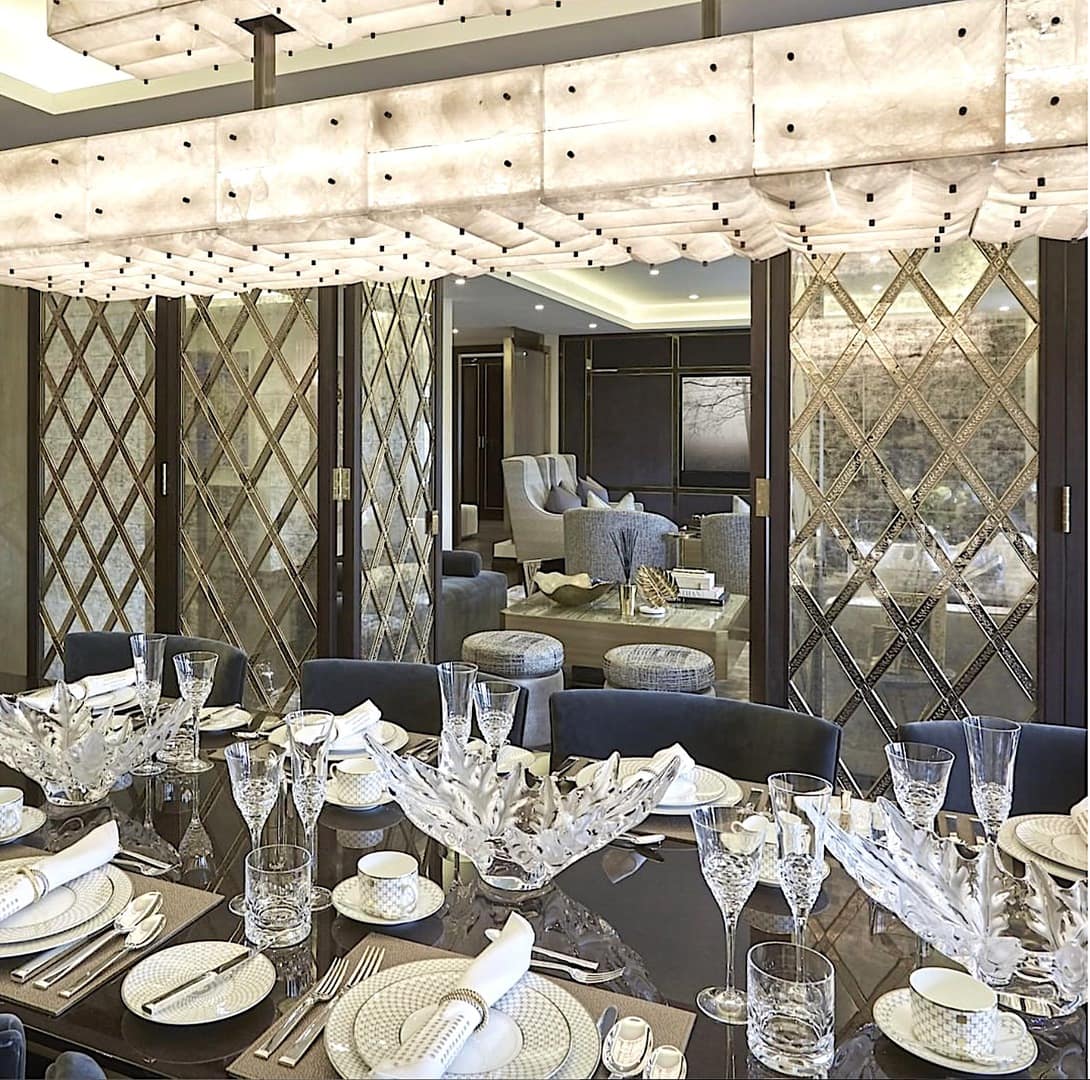
Dining room featuring an opulently mirrored wall designed by Katharine Pooley. Photo credit: @katharinepooleyltd.
It is not only furnishings that play a role in our taste perception and influence our table manners but also lighting and art, colours and shapes, scents and music. Let’s explore these factors in more detail.
Lighting while dining
Daylight and bright artificial light motivate better manners and behaviour in humans. In these conditions, we have higher self-control and are more likely to make healthy food choices and not overeat. On the other hand, dining in a dimly lit room, including candlelight, is linked with a prolonged pleasurable time at the table… and indulging ourselves with an unplanned dessert or an extra glass of wine.

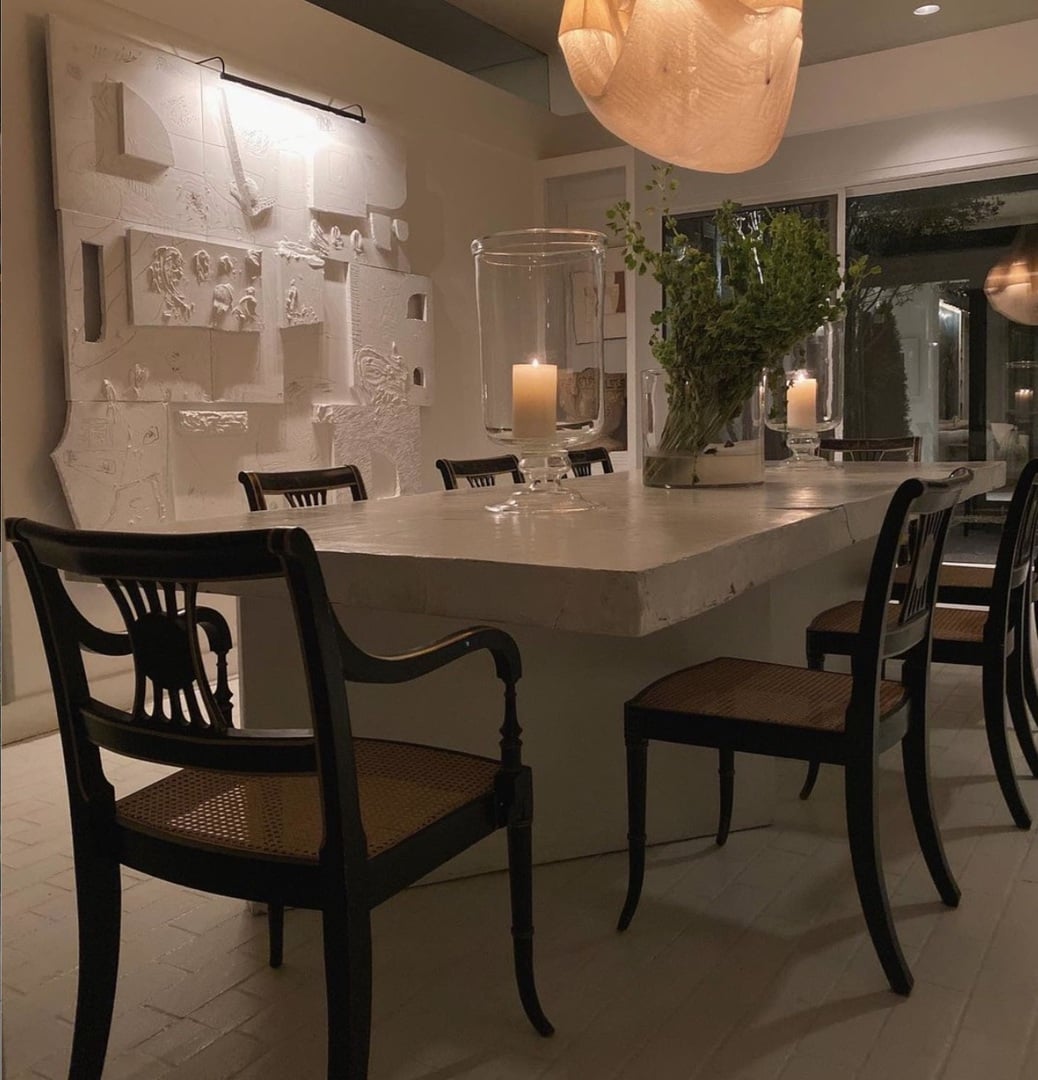
One room, two different moods created by the intensity of light. Dining room captured in daylight (1st picture) and by softly dimmed light in the evening (2nd picture). Interior design by William Rankin McLure. Photo credit: @william_mclure.
Art promoting healthy snack choices
Art objects have an effect on us through their forms of expression, subject and colours. Vivid colours, expressive lines and shapes, and engaging subjects increase our emotional affection, which could lead to more consumption. Therefore, art objects with moderate expression are recommended for dining rooms.
Researchers have made an interesting conclusion: seeing “thin, human-like sculptures by the artist Alberto Giacometti . . . facilitate[s] dieting by reducing chocolate intake and promoting healthy snack choices.”

Sculpture by the Swiss artist Alberto Giacometti.
Further research says that exposure to romantic stimuli such as watching a sentimental movie or reading a love novel “affects consumers’ subsequent consumption of sweets.”
Appetising and non-appetising colours
Colours have an immense influence on our perceptions of food and its taste. This psychological phenomenon is, for example, applied in pharmacy as different colours are used to boost the placebo effect of pills, e.g. red for stimulants, light pink for tranquillisers.
So, it is helpful to know which colours would suit our dining area if we want to control our weight.

Basilic soufflé in tomatoes.
Photo credit: www.bettybossi.ch

Stuffed aubergines.
Photo credit: www.bettybossi.ch
Imagine you don’t know how stuffed aubergine and basilic-tomato soufflé taste. Which dish would you choose just by looking at the colours?
Scientific research has identified some appetising and other non-appetising colours. For example, there is an opinion that aubergine-purple suppresses appetite. This assumption is not without logic, given that purple is one of the most sophisticated, spiritual colours. On the other hand, it is logical to assume that bright warm colours like red, orange and yellow, which have an energising psychological effect, will stimulate our appetite.
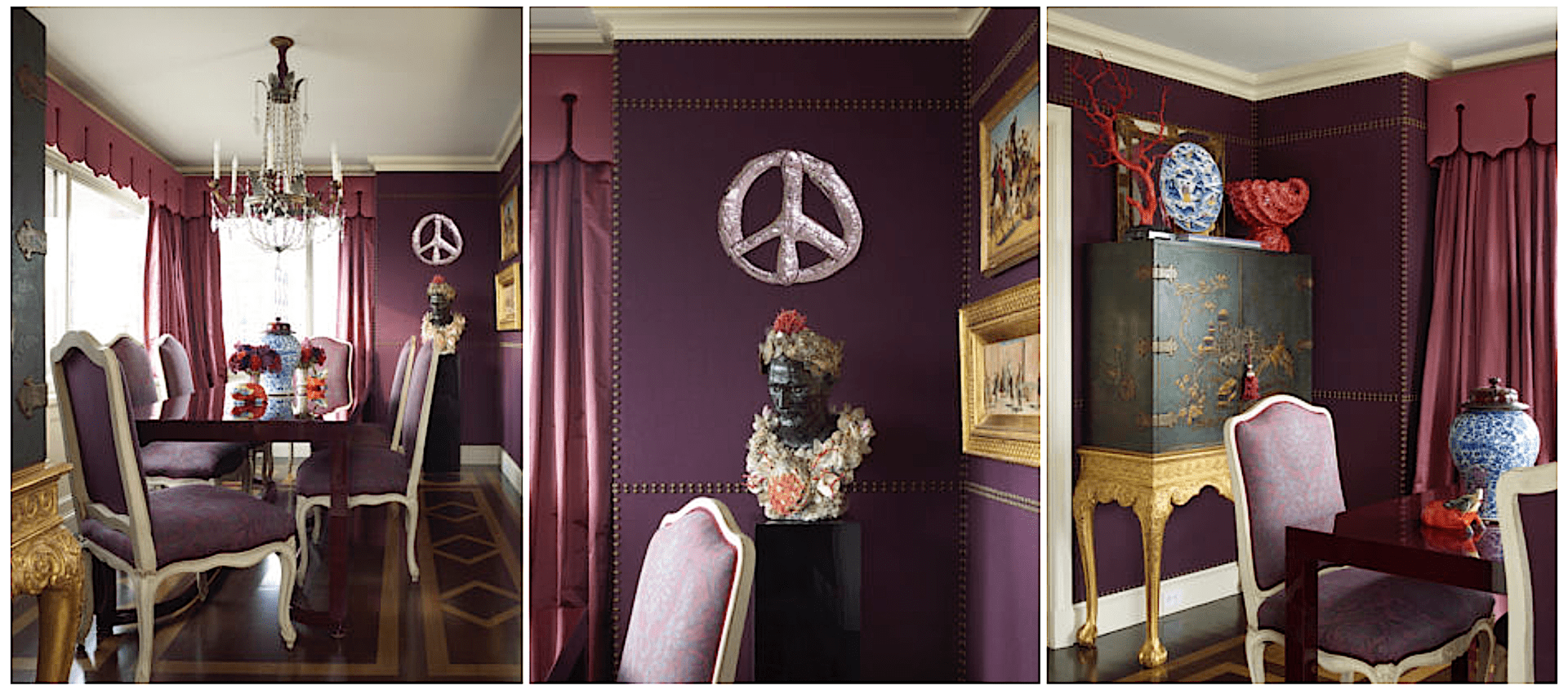
Luxurious dining room dressed all over in shades of purple. Interior design by Alex Papachristidis Interiors. Photo credit: www.alexpapachristidis.com
Sweet & sour shapes
Another newly found though-provoking correlation is between shape and flavour: “Round shapes are associated with a sweet taste, whereas angular shapes are associated with sour and bitter tastes”. So, we can consider this indication when we choose our dining room furniture, tableware and decoration objects.
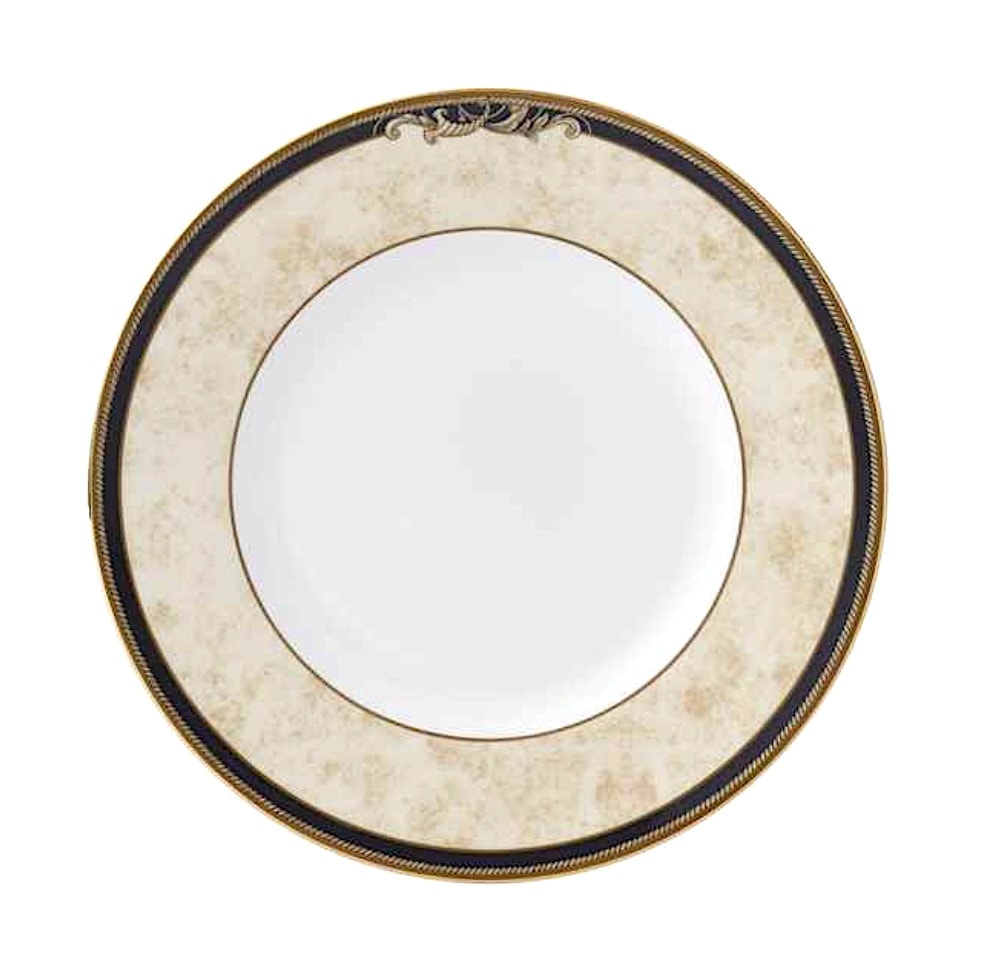
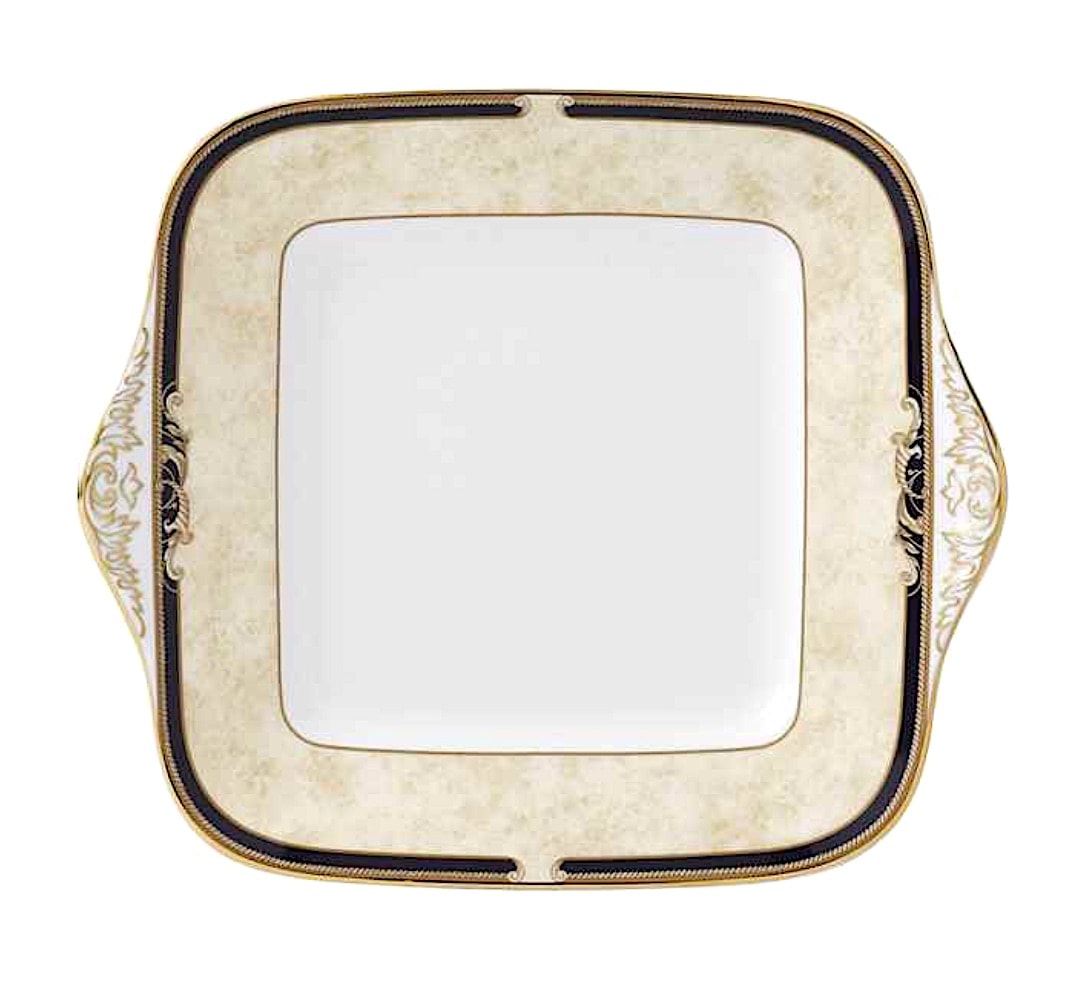
Sweet or Sour: Plates in round and rectangular shapes by the renowned British tableware manufacturer Wedgwood. Photo credit: www.wedgwood.com
Scents
At this point, we will list the scents that stimulate our appetite… and you know what to do. These are mainly some food odours like cocoa, chocolate, vanilla, coconut, cinnamon, and others associated with socio-cultural and personal experiences, e.g. freshly baked baguette for French or Brazilian churrasco popular not only in Brasil but gradually fascinating the international consumer as well.
Unfortunately, research hasn’t said a lot about odours that can keep us happy hungry. According to one opinion, the smell of a warming room scent such as cedar wood reduces the desire for “calorie bombs”, just as we prefer food with low calories in hot weather.

Natural room scents and candle Cedre, manufactured by Collines de Provence. Photo credit: www.collinesdeprovence.com
Music
As with other sensory stimuli, the kind and volume of music we listen to while eating affect our choice of healthy vs non-healthy food and also the amount consumed. Playing soft, melodic background music, which we enjoy, makes us calm down, and as a result, our food choices become more rational. In contrast, loud music tones may be perceived as hectically discordant what can bring us out of inner balance and self-control; this leads to unhealthy food and beverage choices.
Listening to loud music has its benefits, too, although not in the dining but in the fitness room. Its loud tones have an energising effect that stimulates our workout, and consequently, we burn more calories.
Exposure to daylight and light at night
Last but not least, let’s turn our attention to day and night light and lighting – a vital factor for keeping a healthy weight.
Exposure to daylight and the absence of light during the night are two conditions that we have to respect because they significantly affect our mental and physical health, including weight regulation.
Research evidence highlights that:
- Taking our portion of bright light during the day is connected with keeping a healthy weight. Thereby, “20 to 30 minutes of morning light between 8 am and noon can help keep BMI in check, and 500 lux is the minimum intensity of light that affects BMI.”
- On the other hand, exposure to a light source at night during sleeping may affect our metabolic functions and result in weight gain.
We can conclude: let daylight and sunshine into every room during the day and eliminate any natural and artificial light in your bedroom during the night. In practice, this means: 1) It is highly beneficial when the windows of spaces for day activities, such as a living room and study, face East and East-South. 2) Make sure your bedroom is provided with all the necessary window dressings such as thick, lined curtains, blackout curtains and/or blinds.

Taking our portion of bright light during the day is tightly linked with keeping a healthy weight. Photo credit: @baccarat.
Returning to the first image in this essay, we can see that the furnishings of the dining room pictured have some key components that can support our quest for desired weight. It is a separate room, clean and tidy, furnished with just the right furniture – a large table and comfortable chairs; it has enough light for daytime and evening meals; we can observe ourselves in a large mirror and control our behaviour at the table; and the sculpture, a slender human figure reminds us of our destination. To create the ideal table-scape in accordance with our goal, we can change the flowers in the vase for purple flowers of the season and have tone-on-tone tablecloth, napkins or tableware as shown in the images below.
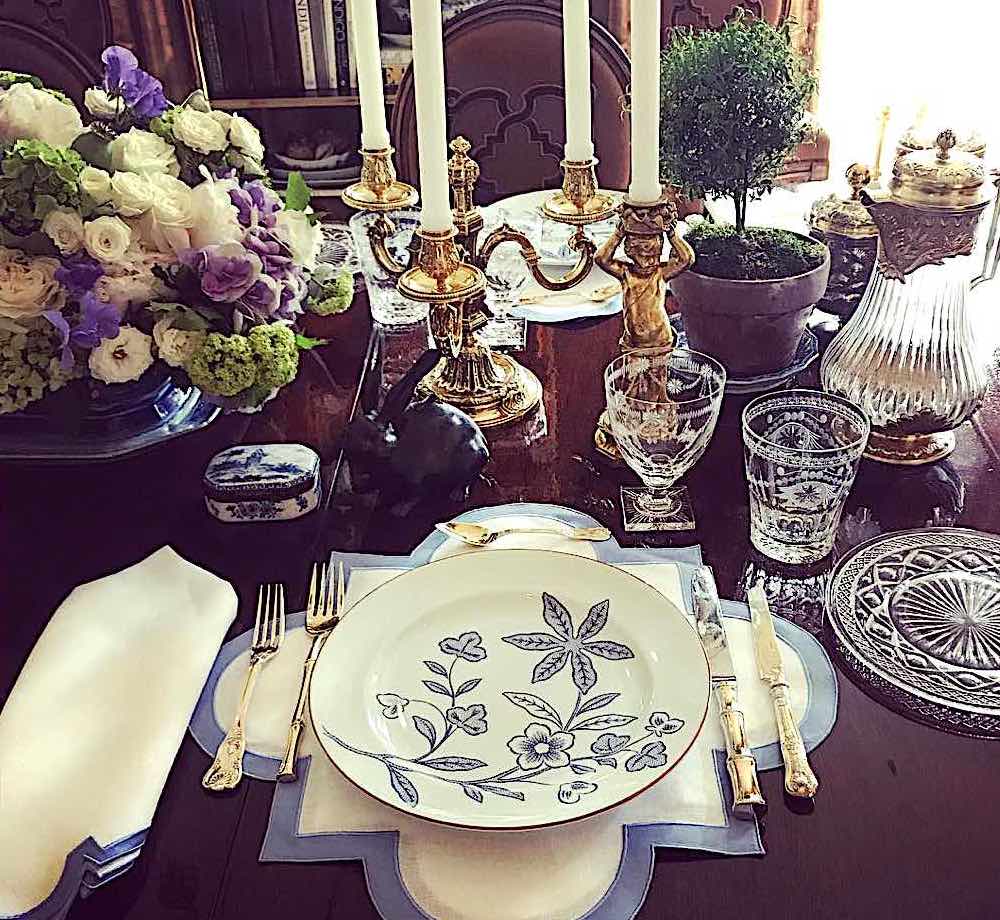

A table centrepiece filled with sweet peas & lilac (1st picture). Table setting in purple (2nd picture). Design and Photo credit @everydayelegancecollection.
Rearranging our interior does not automatically make us slim. Still, it can significantly support our efforts to achieve the body weight we feel comfortable with and, respectively, have better health and win higher self-confidence.
